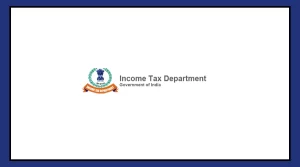Public Provident Fund (PPF) is a highly popular investment option among the masses.
It is accessible to all Indian citizens, offering a compounding interest rate of 7.1 percent.
This government-backed scheme guarantees returns and has a maturity period of 15 years.
Upon maturity, investors are provided with three options to consider.
If you have invested in this scheme, it is crucial to familiarize yourself with these options.
Complete Withdrawal
Upon PPF maturity, you have the choice to withdraw the entire amount, including the accumulated interest, and utilize it as per your preference.
To transfer the funds to your savings account, you need to submit a form to the bank or post office where your PPF account is held.
Within a few days, the entire amount, along with the interest, will be credited to your account.
Extension for 5 Years
If desired, you can continue contributing to your PPF account for an additional 5 years by submitting an application to your bank or post office before 1 year from the date of maturity.
This extension requires filling out a form, which should be submitted at the same post office or bank branch where your PPF account is maintained.
Failure to submit the form in a timely manner will result in the inability to contribute further. During this extended period, you may also make withdrawals if necessary.
Interest Withdrawal
Alternatively, after the 15-year maturity period, you can choose to receive interest on your deposit without making any further investments.
Informing the bank or post office is not mandatory for this option.
If you do not withdraw the amount after the maturity period, this option will be automatically implemented.
You can withdraw any amount from the account at any time, including the option to withdraw the entire sum.
This feature provides the flexibility of a fixed deposit and a savings account.
Advantages of PPF
Despite depositing small amounts, you can accumulate a significant sum in your PPF account.
For instance, by depositing Rs 2,000 every month, you will have contributed Rs 24,000 annually.
Over the course of 15 years, your total deposits would amount to Rs 3,60,000.
With an interest rate of 7.1 percent, you would earn Rs 2,90,913 as interest, resulting in a total collection of Rs 6,50,913.
Furthermore, continuing to invest in the scheme for an additional 5 years would add Rs 10,65,326 to your savings.
Moreover, PPF offers tax benefits. It falls under the EEE category, entailing full tax exemption on the invested amount, interest earned, and the maturity amount.
Additionally, under Section 80C of the Income Tax Act, you can avail tax exemption on investments up to Rs 1.5 lakhs annually.

























